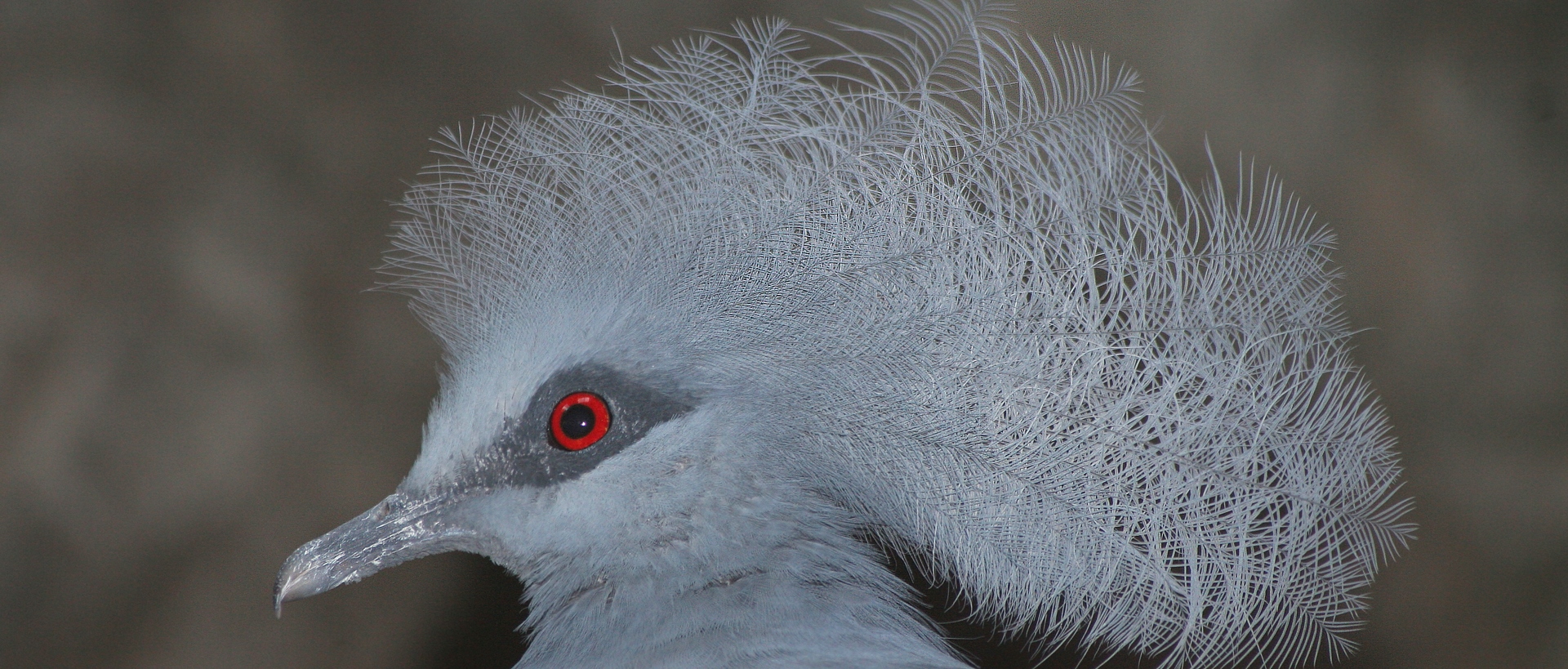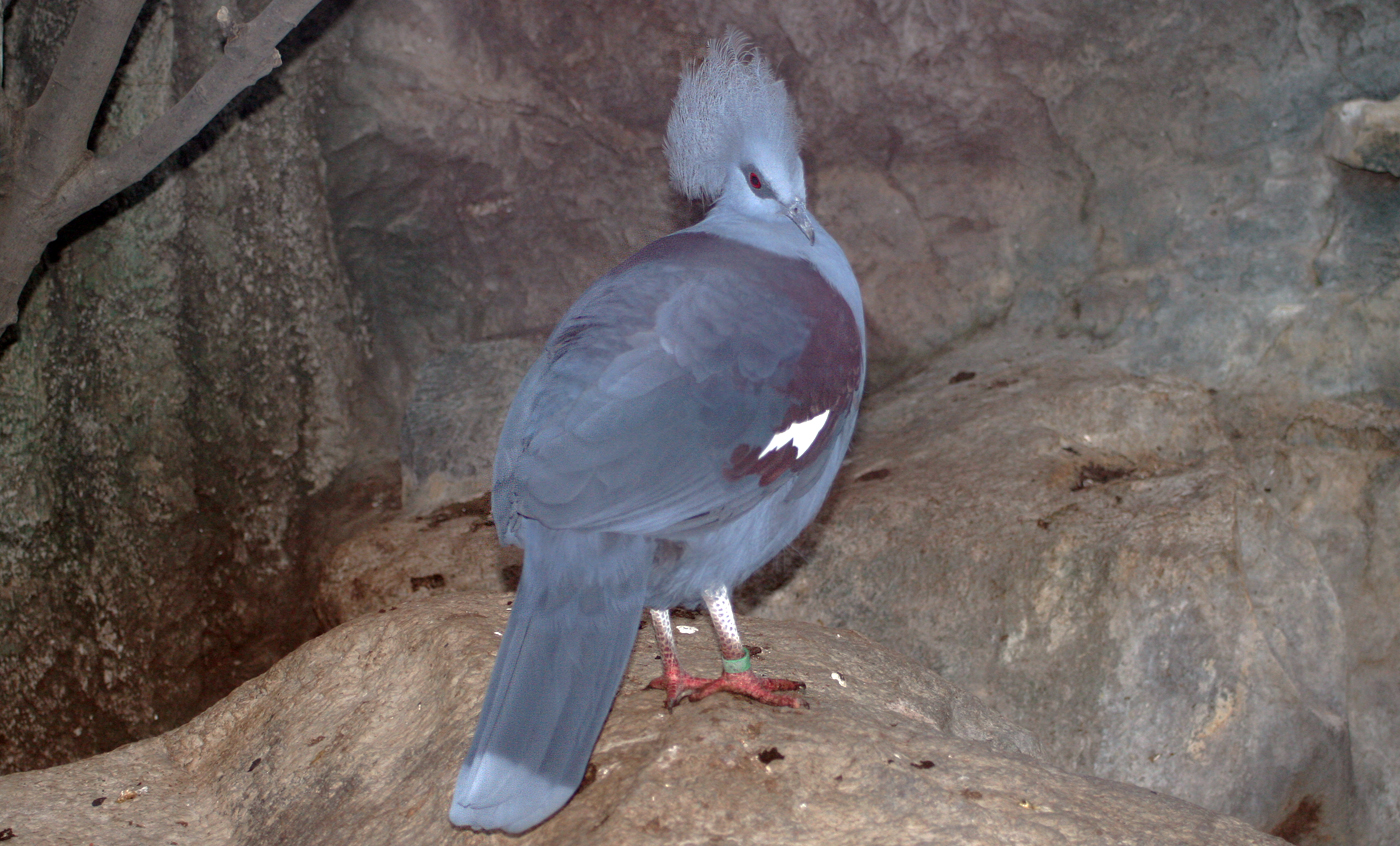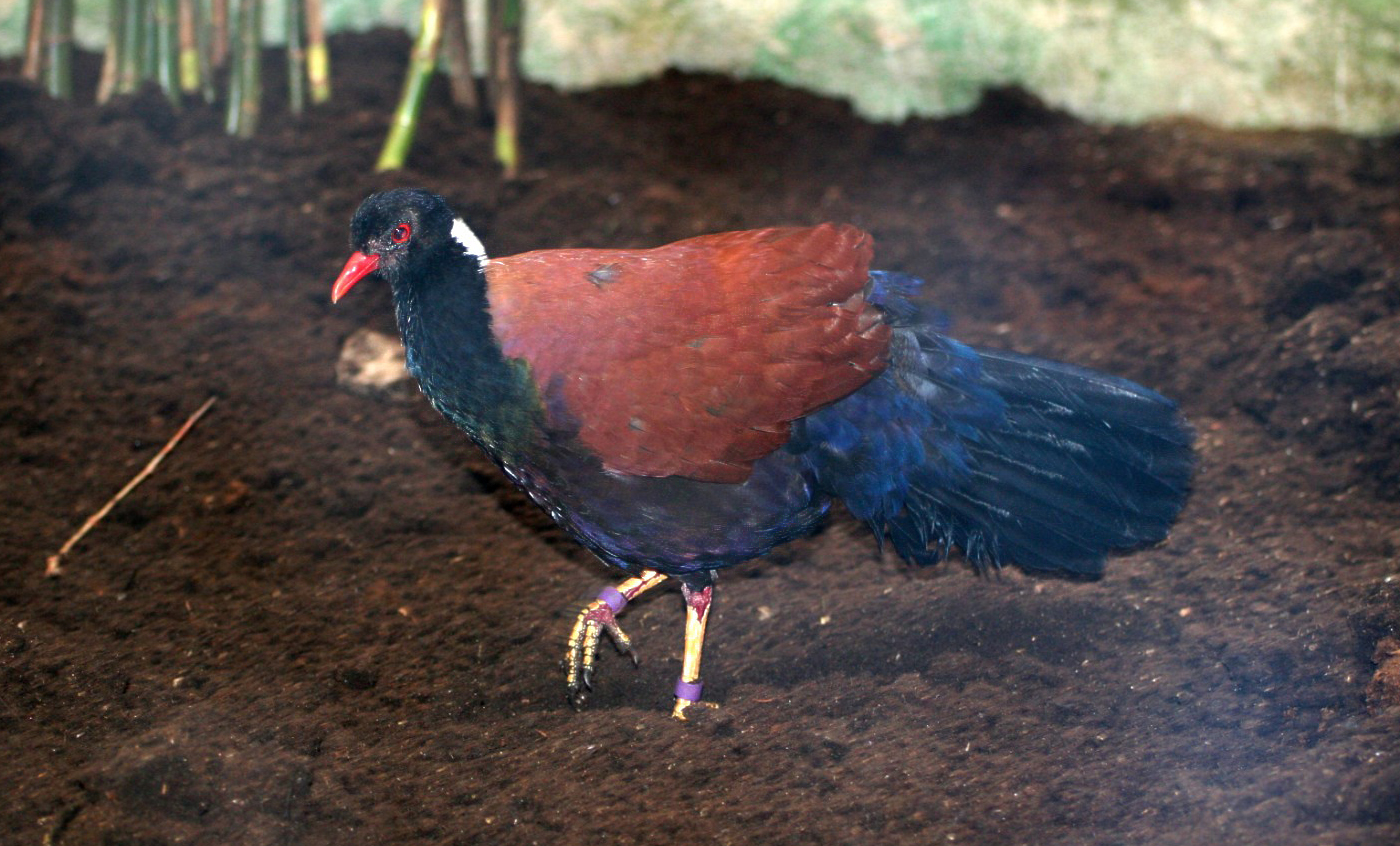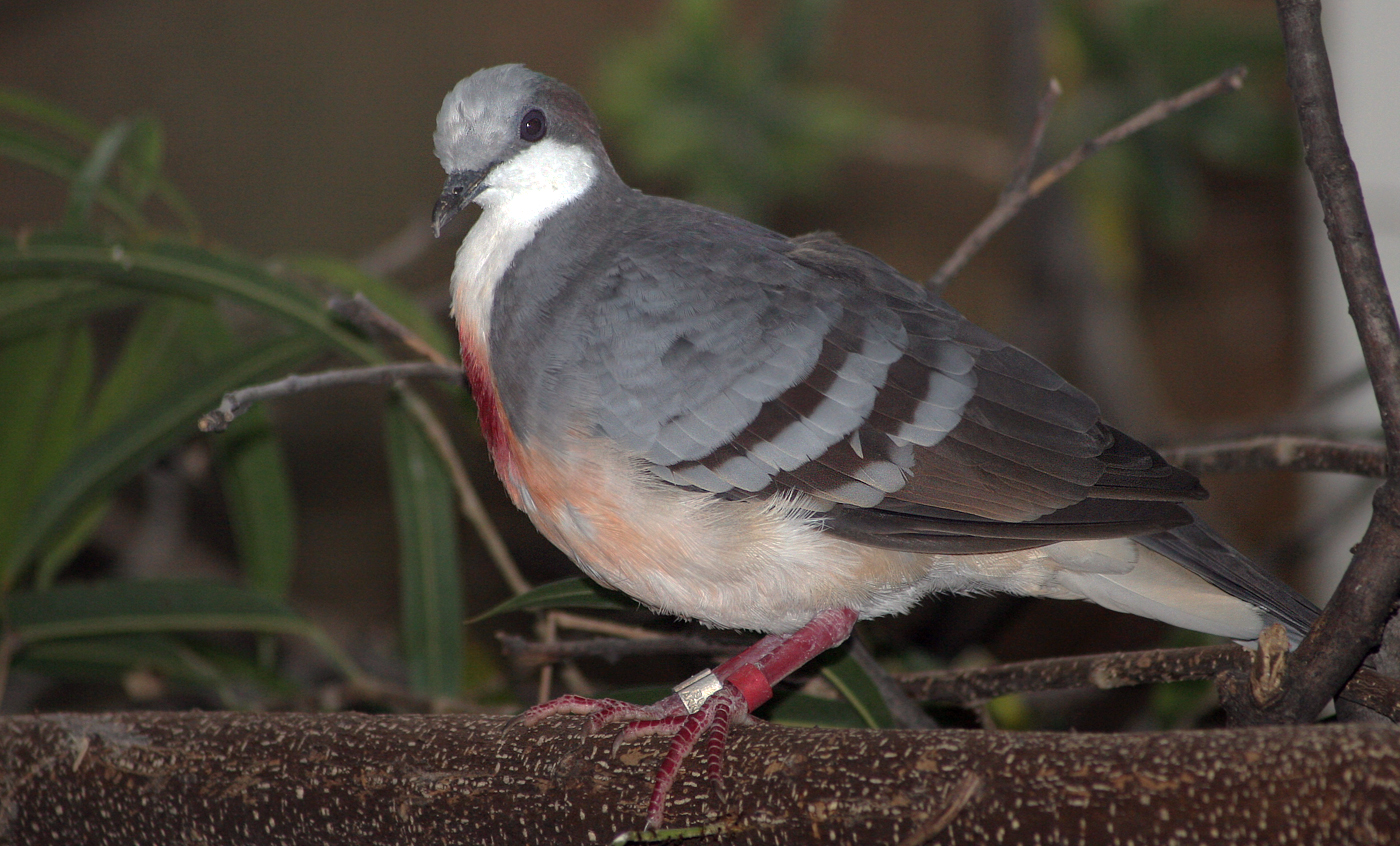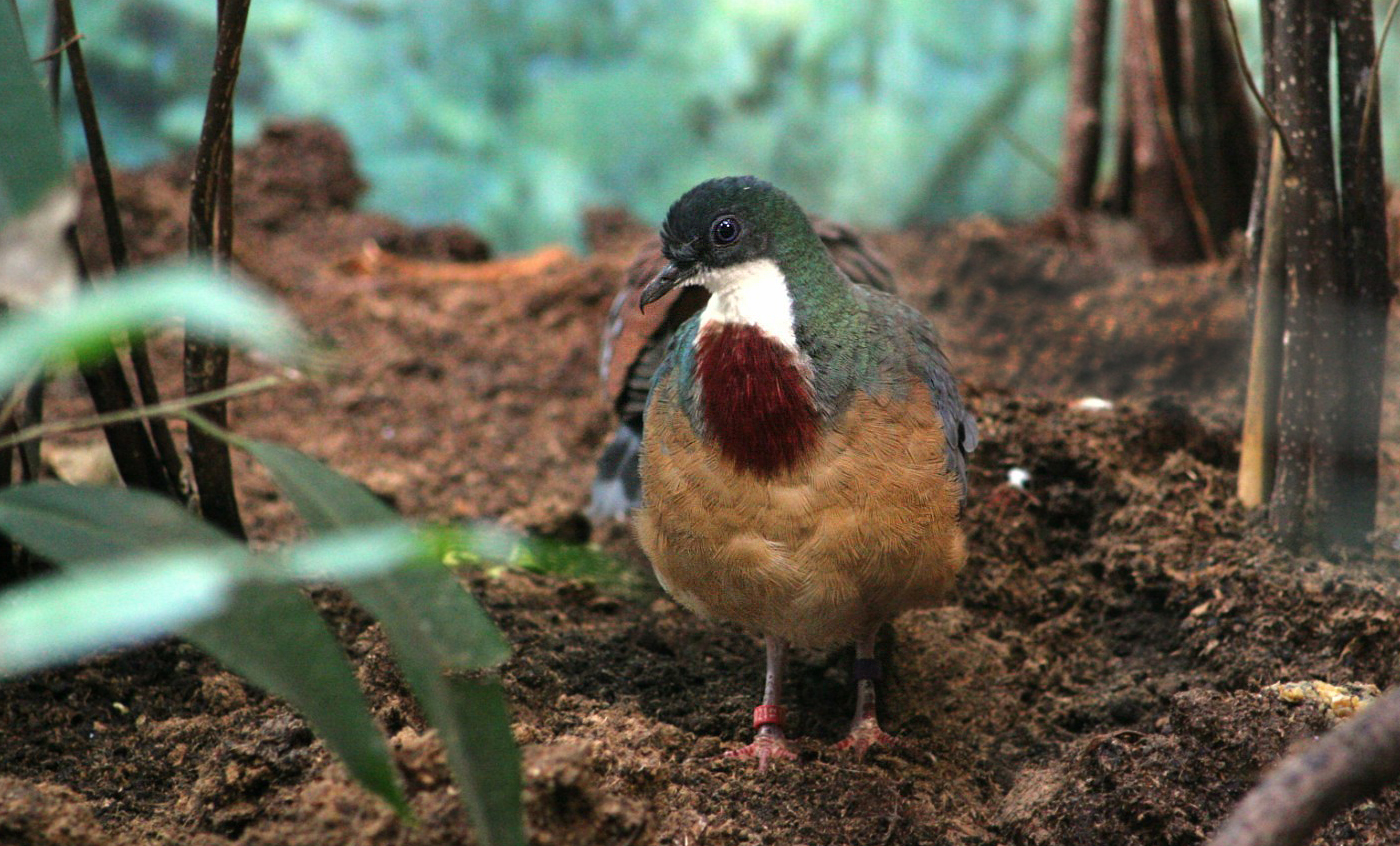Blue crowned pigeon
Crowned pigeons are the largest living pigeons, with a weight that can reach nearly 2.5 kg. With terrestrial habits and basically a herbivore, they eat fallen fruits on the ground, seeds, berries and young shoots, although they can also catch small invertebrates. The blue crowned pigeon is characterised by its blue breast and the blue crest on its head.
Breeding program
Natural habit
New Guinea
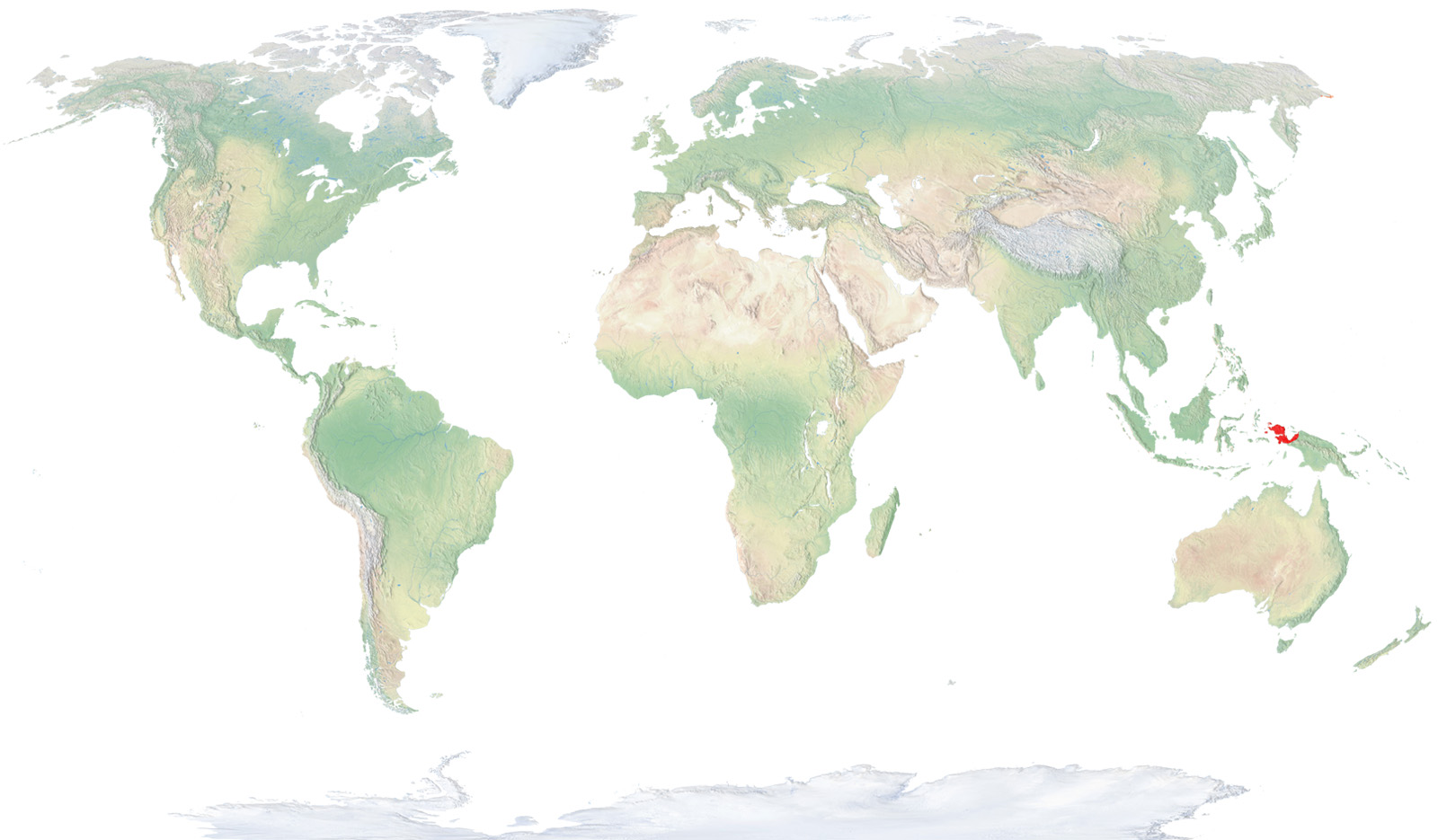
- Distribution / Resident
- Breeding
- Wintering
- Subspecies
Risk level
- Extint
- Extint in the wild
- Critically endangered
- In Danger
- Vulnerable
- Near threatened
- Minor concern
- Insufficient data
- Not evaluated
Taxonomy
Physical characteristics
Biology
Reproduction
Biology
Crowned pigeons are the largest pigeons that exist and they can weigh up to 2.5 kg. The plumage of the blue-crowned pigeon is blue, with brown shoulders and back and a conspicuous white spot on the wings. Their eyes are red, framed by black eyebrows, with a crest of delicate long blue feathers high on the head. The other species that lives at the Barcelona Zoo, the Victoria-crowned pigeon, is different than the blue-crowned pigeon due to having a brown chest and spotted black-and-white head feathers.
They inhabit lowland mangroves and rainforests in western New Guinea and other nearby smaller islands, where they travel in small flocks of between two and a dozen individuals.
This terrestrial bird is fundamentally herbivorous, and eats fallen fruits, seeds, berries and tender shoots, although it can also capture small invertebrates.
The nests are large platforms made with leaves and twigs that they build in branches some distance from the ground. They lay a single egg which is incubated by both sexes for 28 to 29 days..
Although they are essentially terrestrial, they tend to spend nights high in treetops. They are sedentary birds that do not make seasonal migrations.
In recent years, wild populations of this species have suffered a steep decline, due to overhunting for human consumption and, primarily, the deforestation of their forest habitat.
The Barcelona Zoo participates in the European Studbook (ESB) for this species in captivity and keeps an important breeding colony of this endangered pigeon.




